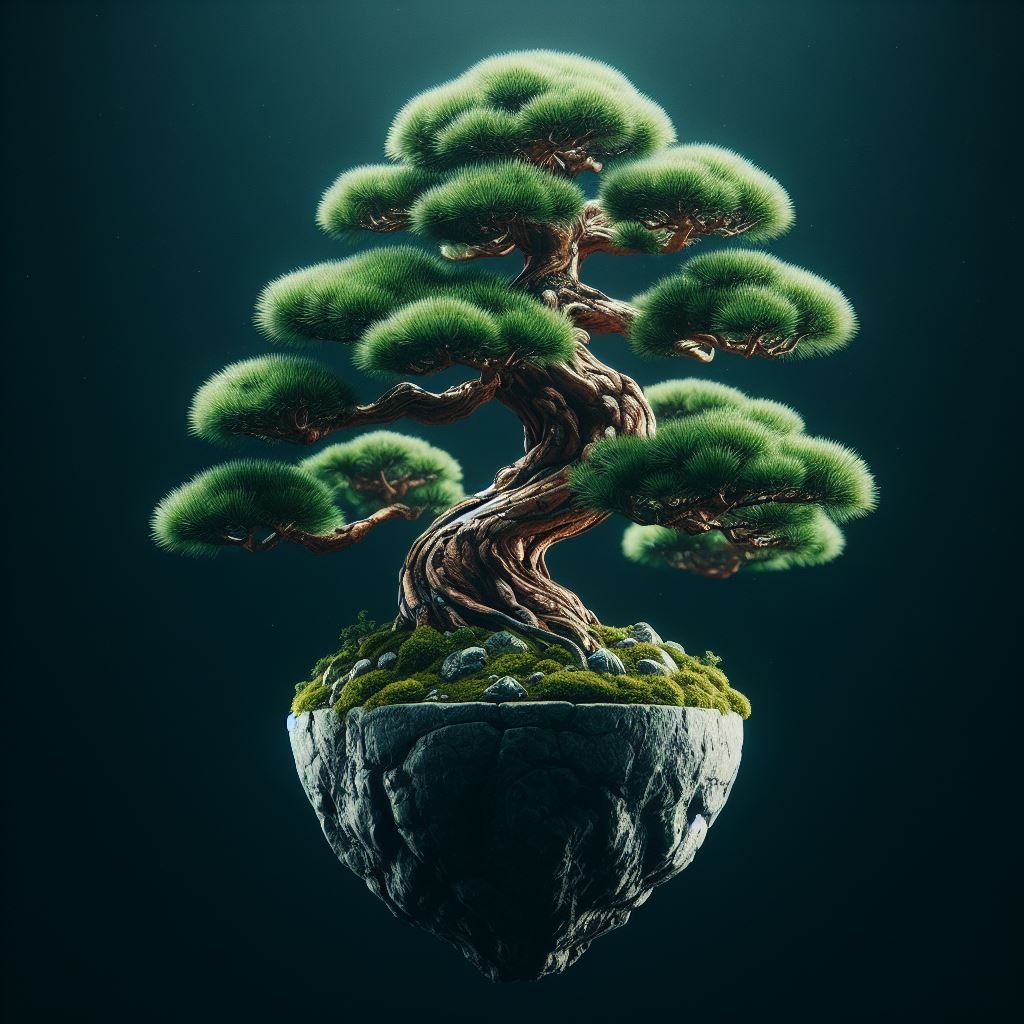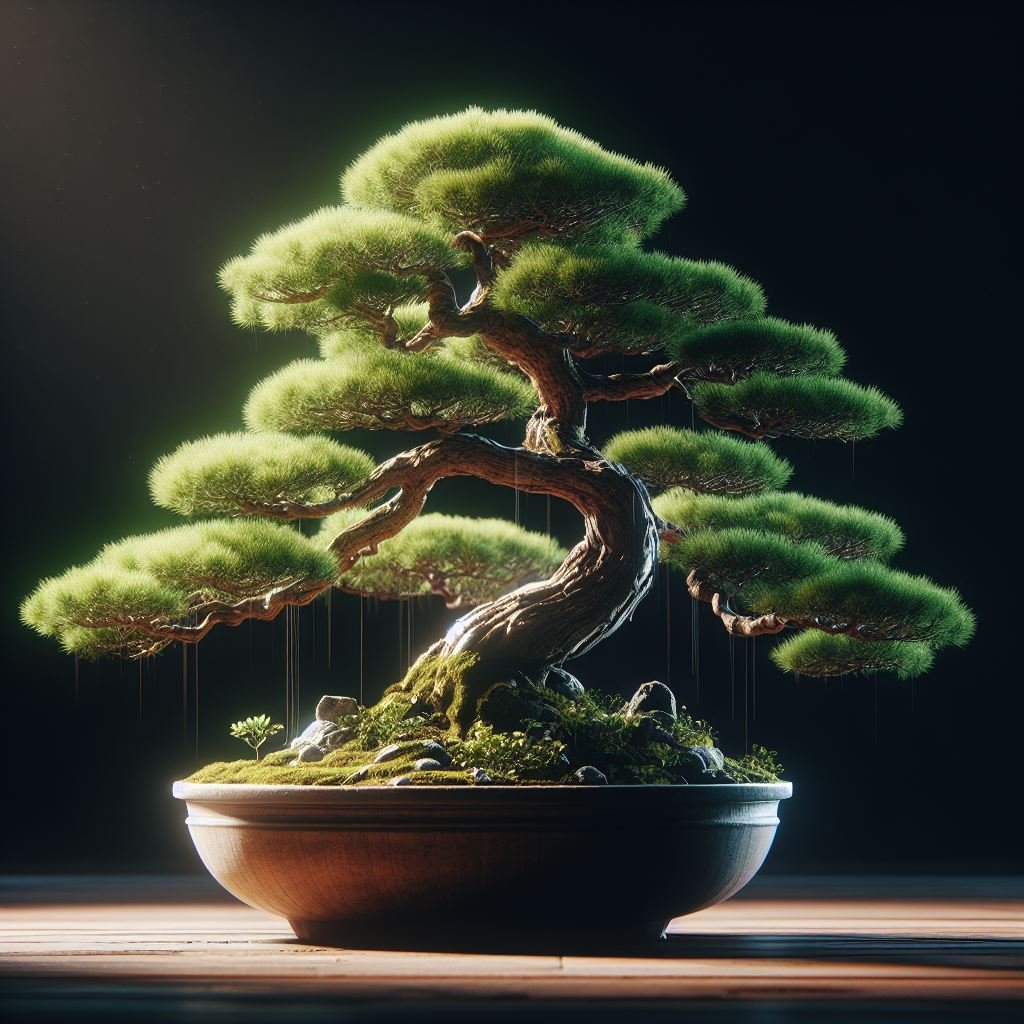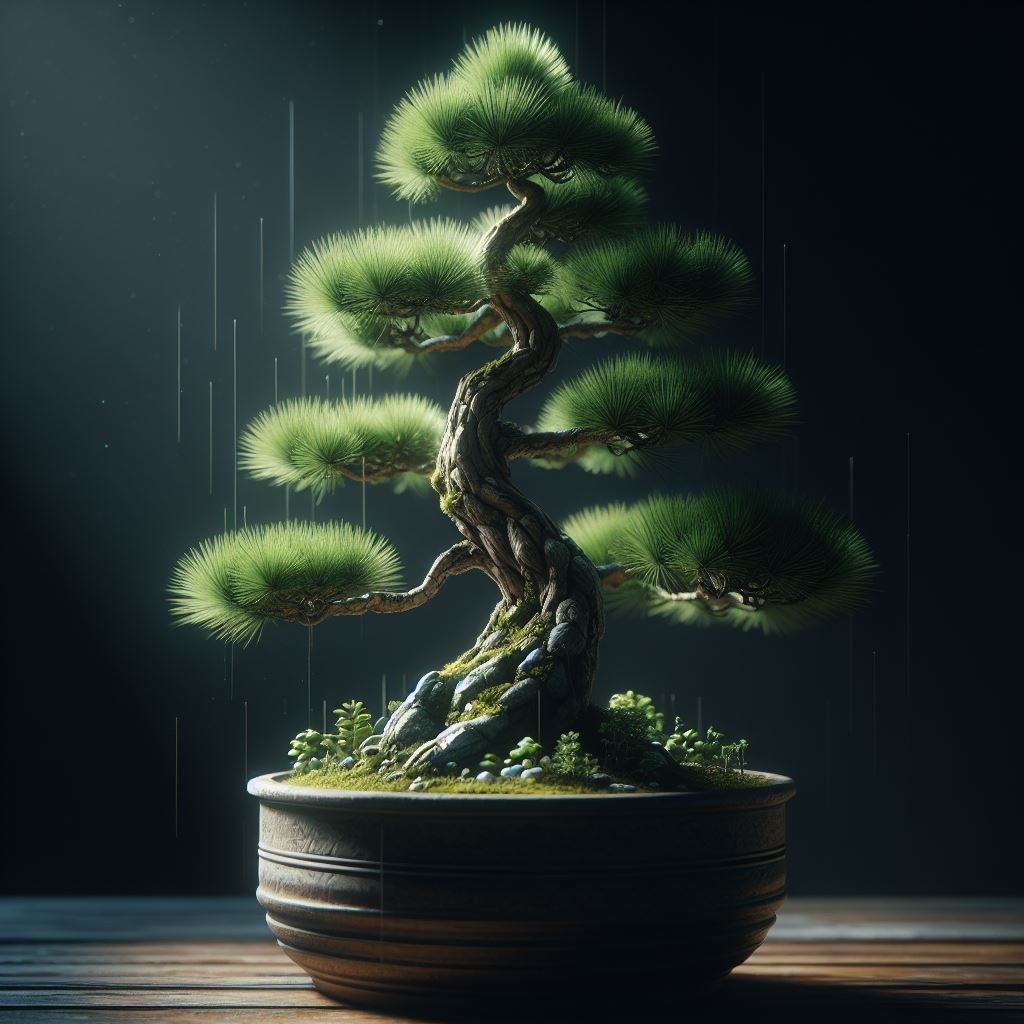In the world of bonsai cultivation, the loblolly pine bonsai holds a unique position. Known to be the second most common tree species in North America, the loblolly pine presents a distinctive opportunity for bonsai enthusiasts. Despite its long needles, which might not seem ideal for bonsai, the tree’s potential for growth and adaptation is truly remarkable. This comprehensive guide will explore the art of nurturing and maintaining a loblolly pine bonsai, providing insights into its unique characteristics, care requirements, and aesthetic potential.
Understanding the Loblolly Pine
The loblolly pine, scientifically known as Pinus taeda, is a fascinating tree species that has captivated both botanists and bonsai enthusiasts alike. Native to 15 southeastern states in the US, it is one of the fastest-growing pines and has been extensively cultivated in forest plantations due to its value in the lumber industry.
One of the most distinguishing characteristics of the loblolly pine is its deeply grooved, blocky bark that is typically dark brown and thick. This unique bark texture adds an element of visual interest to a bonsai display and provides a rugged, natural appearance.
The leaves of the loblolly pine occur in bundles of three and can reach up to 15 cm (6 in) long. In the spring, the tree showcases red-to-yellow male cones and yellow-to-purple female cones, adding a burst of color that contrasts beautifully with its dark foliage.

The loblolly pine cones are another noteworthy feature. They have a red-brown tint at maturity, first appearing as woody, stalkless structures that are 3″ to 5″ long and oval in shape. The cones are armed with prickles on the tips of the scales and require two years to mature. These often-paired cones persist on the tree for several years and mature in the fall.
Despite its large size in nature, reaching heights of 46 meters (150 ft), the loblolly pine can be skillfully trained and pruned to create a stunning bonsai representation of this majestic tree. Its rapid growth rate, unique physical traits, and adaptability make it a compelling choice for bonsai cultivation.
Starting Your Loblolly Pine Bonsai Journey
Starting your journey with a loblolly pine bonsai begins with sourcing a healthy seedling or bare-root tree. Several online nurseries and local garden centers offer loblolly pine seedlings for sale, ensuring that you can get a good start regardless of where you are located.
Loblolly pine seedlings are typically shipped bare-root, meaning they are sold without any soil around their roots. These seedlings are usually 6-12 inches tall at the time of shipment, making them ideal for planting right away.
While both bare-root and containerized seedlings are available, studies suggest that bare-root seedlings provide survival rates of around 88% in most reforestation situations. Additionally, bare-root pine seedlings typically cost between ½ and ⅓ the price of container seedlings, making them a cost-effective choice for beginners.
Once you have procured your seedling, the next step is to prepare it for planting. It is important to remember that these trees were once grown in a nursery, so they will need some time to acclimate to their new environment. Keep your seedling hydrated and plant it as soon as possible to ensure its health and survival.
In the next sections, we will delve into the specifics of caring for your loblolly pine bonsai, including watering, feeding, sun exposure needs, and more.
Caring for Your Loblolly Pine Bonsai
Caring for a loblolly pine bonsai requires an understanding of its natural habitat and growth requirements. As a species native to the southeastern United States, it thrives in full sun and well-drained soil.
Watering: Loblolly pines are known for their tolerance to both drought and waterlogged conditions. However, as a bonsai, it’s crucial to provide a moderate amount of water. Allow the top inch of soil to dry out before watering again. Overwatering can lead to root rot, a common issue with bonsai trees.
Feeding: Loblolly pines are not heavy feeders but do require nutrients to sustain healthy growth. Use a balanced, slow-release fertilizer during the growing season (spring and summer). Fertilize every four to six weeks, but avoid feeding during the hottest part of the summer or when the tree is stressed.
Sun Exposure: Loblolly pines thrive in full sun. If you’re keeping your bonsai indoors, place it near a south-facing window where it will receive plenty of light. If the tree doesn’t receive enough light, it may become leggy and weak.
Soil: Use well-draining bonsai soil to prevent waterlogging and promote root health. A mix of akadama, pumice, and lava rock is often recommended for coniferous bonsai trees like the loblolly pine.
Temperature and Humidity: Loblolly pines can tolerate a wide range of temperatures, from hot summers to cold winters. They are hardy in USDA zones 6-9[6]. However, as a bonsai, it’s best to protect the tree from extreme temperatures.
Pruning and Shaping Your Bonsai
Pruning and shaping are integral parts of bonsai cultivation, helping to maintain the miniature size of the tree and enhance its aesthetic appeal. Here are some guidelines on how to prune and shape your loblolly pine bonsai:

Pruning:
The best time to do heavy pruning for most pine species, including the loblolly pine, is late summer through fall, from late August through October. Pruning helps to remove unnecessary branches and promote the growth of new, healthy ones.
When pruning, always make sure to use sharp tools to ensure clean cuts. You may need to use loppers for thicker branches and a fine-toothed saw for larger cuts. Always remember to leave a small stub when removing branches, as cutting too close to the trunk can harm the tree.
For the loblolly pine, you can trim the bottom, but it’s not recommended to prune the top as it affects its natural shape. However, in bonsai cultivation, it might be necessary to prune the top to maintain the desired size and shape.
Shaping:
Shaping, or training, is done using wire to gently guide the growth of the tree. Wire the pines from early autumn to early spring, or just after candle pruning in early to mid-summer.
The process involves wrapping wire around the branches and gently bending them to achieve the desired shape. Be careful not to wrap the wire too tightly as it can cut into the bark and damage the tree. It’s also important to monitor the tree closely and remove the wire before it begins to cut into the bark.
Remember, both pruning and shaping should be done gradually and with care. The goal is to create a balanced, aesthetically pleasing tree that still maintains the natural characteristics of the loblolly pine.
Overcoming Challenges
Growing a loblolly pine bonsai can be a rewarding experience, but it also comes with its own set of challenges. Here are some common issues and their solutions:
1. Needle Browning:
If the needles on your loblolly pine start to turn brown, it may be due to a lack of water or a fungal disease such as Dothistroma needle blight. Ensure your tree is receiving adequate water without becoming waterlogged. If the problem persists, consider using a fungicide specifically designed for pines.
2. Insect Pests:
Loblolly pines can be susceptible to pests such as pine beetles and aphids. Regularly inspect your bonsai for signs of pests. If you notice small holes in the bark, sawdust at the base of the tree, or a sudden loss of vigor, you may be dealing with a pest infestation. Consult with a local extension service or a bonsai professional for appropriate treatment options.
3. Poor Growth:
If your loblolly pine bonsai isn’t growing well, it could be due to a lack of light, poor soil, or inadequate fertilization. Make sure your tree is getting plenty of light, preferably full sun. Use well-draining bonsai soil and feed your tree with a balanced, slow-release fertilizer during the growing season.
4. Winter Damage:
Although loblolly pines are hardy trees, they can still suffer from winter damage, especially when grown as bonsai. Protect your bonsai from extreme cold by moving it to a sheltered location, like an unheated garage or shed, during the coldest months.
Remember, patience is key when growing bonsai. It’s a long-term commitment and a continuous learning process. If you encounter issues, don’t get discouraged. Reach out to local bonsai clubs or online communities for advice and support.
Success Stories
Growing a bonsai, especially a loblolly pine bonsai, requires patience, dedication, and a deep understanding of the tree’s needs. Here are a few success stories from experienced bonsai enthusiasts who managed to achieve multiple rounds of development in a single growing season:

1. John’s Loblolly Pine:
John, a bonsai enthusiast from Texas, shares his experience with a loblolly pine bonsai that he started from seed. He discovered that by carefully controlling the watering and feeding schedule, he was able to achieve two rounds of growth in one season. He would allow the first flush of growth to harden off before lightly pruning the new shoots, which encouraged a second flush of growth later in the season.
2. Mary’s Intensive Care:
Mary, a bonsai grower from North Carolina, took an undernourished loblolly pine bonsai and transformed it within a single growing season. By providing optimal sun exposure, regular feeding with a balanced bonsai fertilizer, and a well-draining soil mix, she managed to encourage a strong growth response. Her tree produced two full cycles of strong growth in just one season.
3. Robert’s Rescue:
Robert, a bonsai hobbyist from Florida, rescued a struggling loblolly pine bonsai from a local nursery. Despite its weak state, Robert managed to coax two growth cycles from the tree in one season. He credits his success to his meticulous care routine, including proper watering, monthly feeding, and careful pruning.
While these stories demonstrate the potential of achieving multiple growth cycles in a single season, it’s important to remember that every tree is unique. Factors such as the tree’s age, health, growing conditions, and care regimen can all influence its growth pattern. Always observe your tree closely and adjust your care routine as needed to ensure its health and vitality.
Conclusion
Growing a loblolly pine bonsai can be an incredibly rewarding journey. This majestic tree, with its distinctive bark and needle-like leaves, can make a beautiful addition to any bonsai collection. Despite the challenges that come with bonsai cultivation, the satisfaction of nurturing a tree and watching it grow and develop is unparalleled.
As a beginner, you may face obstacles such as choosing the right tools, understanding the tree’s specific needs, or dealing with pests and diseases. However, these hurdles are part of the learning process. Each challenge presents an opportunity to deepen your understanding and connection with your bonsai.
Remember, bonsai is not just about creating a miniature version of a tree. It’s about capturing the essence of nature in a small container. It’s about patience, dedication, and above all, respect for the life you’re nurturing.
Whether you’re aspiring to achieve multiple rounds of development in a single growing season or simply looking forward to seeing your loblolly pine bonsai thrive, remember that every small success is a testament to your care and commitment.
So, don’t be afraid to embark on this journey. Embrace the challenges, celebrate the victories, and most importantly, enjoy the process. The world of bonsai welcomes you, and the rewards, as you’ll soon discover, are well worth the effort.
Frequently Asked Questions (FAQs)
How often should I water my loblolly pine bonsai?
The frequency of watering can differ based on the size of your bonsai, the size of the pot, the type of soil, the season, and the climate. The rule of thumb is to water when the top layer of the soil feels dry to the touch. Always water deeply until water runs out of the drainage holes.
How should I prune my loblolly pine bonsai?
Pruning is essential to maintain the shape of your bonsai and to encourage new growth. For loblolly pine bonsai, it’s recommended to prune in early spring. Always use sharp, clean pruning shears to avoid causing unnecessary damage to the tree.
How much sunlight does a loblolly pine bonsai need?
Loblolly pine bonsais thrive in full sun, but they can also tolerate some shade. A good rule of thumb is to provide at least 4-6 hours of direct sunlight each day.
How to handle pests on my loblolly pine bonsai?
If you notice signs of pest infestation, it’s important to act quickly. Depending on the type of pest, different methods of control may be required. In general, using organic insecticides or horticultural oils can help manage most common pests.
How often should I fertilize my loblolly pine bonsai?
Regular fertilization is crucial for the health and vigor of your bonsai. During the growing season, fertilize your loblolly pine bonsai every two to four weeks with a well-balanced bonsai fertilizer. Always follow the instructions on the fertilizer packaging.
Do loblolly pine bonsais need winter protection?
Yes, while loblolly pines are hardy, as bonsais they need some protection from extreme winter conditions. It’s usually best to overwinter them in an unheated garage or shed where temperatures stay above freezing but below 45°F (7°C).
Sources
- Care and maintenance guide for native US Pine Bonsai
- How to Prune a Pine – YouTube
- Miniature Majesty: Loblolly Pine Bonsai
- How to Grow and Care for the Loblolly Pine
- Care guide for Pine Bonsai species (Pinus)
- How To Grow and Care for Pine Tree Bonsai






This is a great post! On our website, we are going to include a link to this especially well-written post. Just keep up the excellent writing.
I really like reading through a post that can make men and women think. Also, thank you for allowing me to comment!